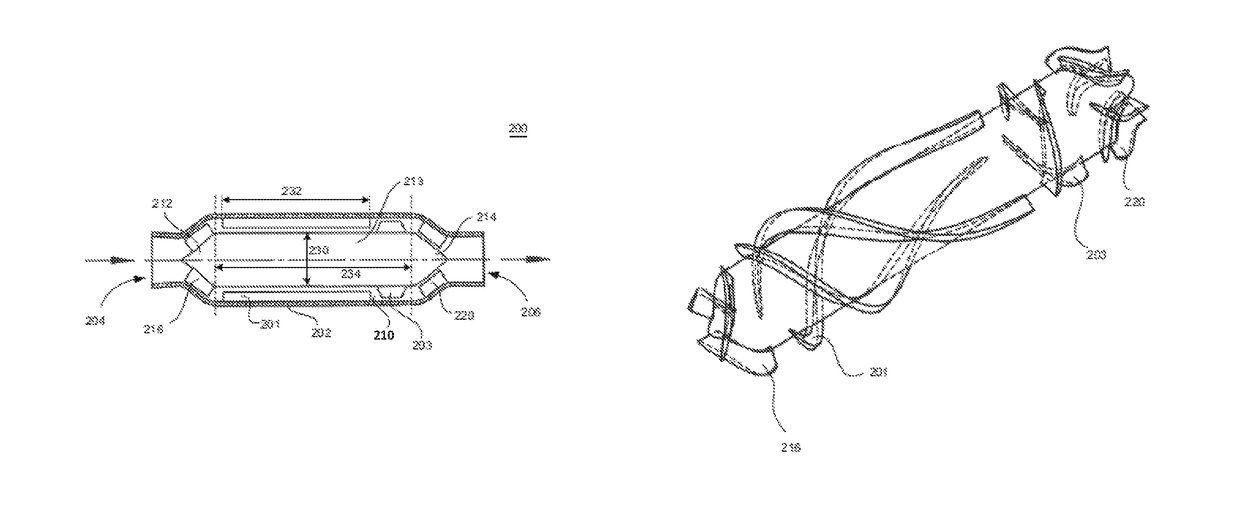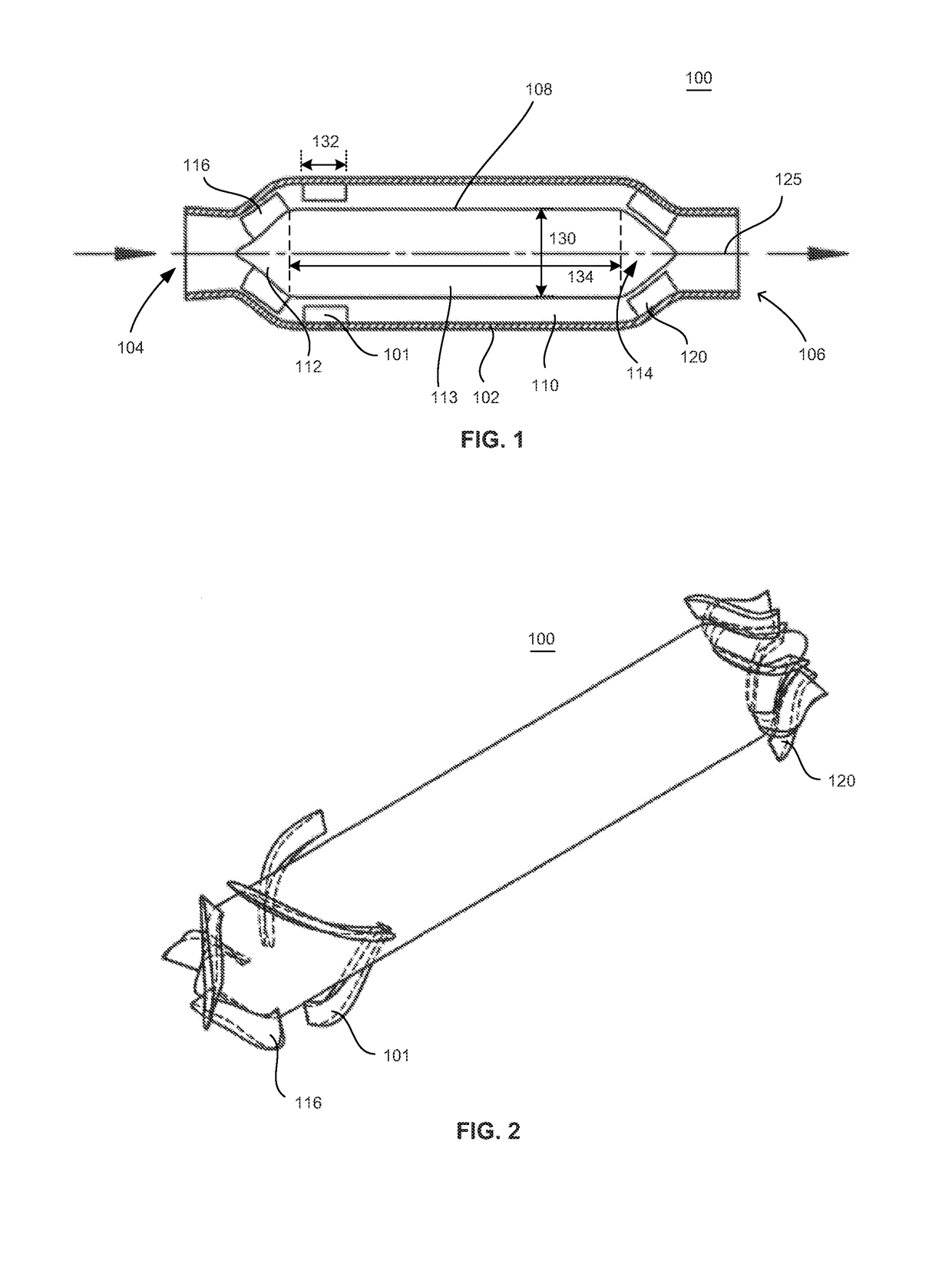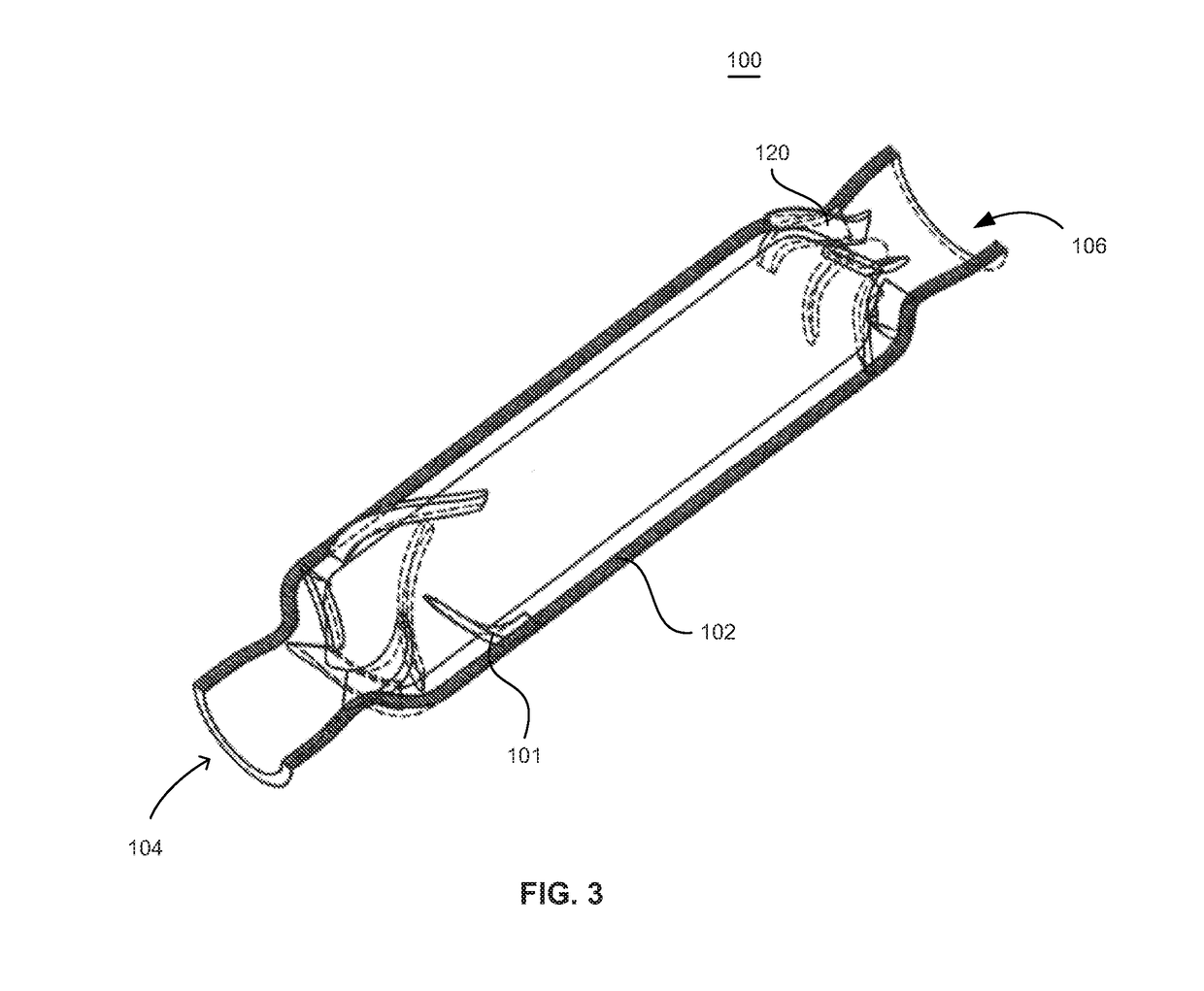Blood pump with separate mixed-flow and axial-flow impeller stages and multi-stage stators
a technology of impeller stage and pump, which is applied in the field of pumps, can solve problems such as red blood cell damage in blood pumps, and achieve the effects of reducing the risk of damage to red blood cells over time, and reducing the circumferential component of the flow
- Summary
- Abstract
- Description
- Claims
- Application Information
AI Technical Summary
Benefits of technology
Problems solved by technology
Method used
Image
Examples
Embodiment Construction
[0025]For purpose of illustration, discussions of the technology will be made in reference to its utility as a cardiac assist blood pump. However, it is to be understood that the technology may have a variety of wide applications to many types of turbomachinery including, for example, commercial and industrial pumps, compressors, and turbines.
[0026]Referring to FIGS. 1 through 3, a rotordynamic blood pump 100 is shown in accordance with an embodiment of the present invention. FIG. 1 shows a meridional section of the pump 100. FIG. 2 shows a perspective view of various components of the pump, the housing of the pump being removed from the view for purposes of clarity. FIG. 3 shows a perspective view of the pump 100 with the housing being sectioned to provide context to other components of the pump 100. Aspects of rotordynamic blood pumps are disclosed in co-pending U.S. patent application Ser. No. 13 / 275,912 filed Oct. 18, 2011, and 13 / 276,009 filed Oct. 18, 2011, the disclosures of ...
PUM
 Login to View More
Login to View More Abstract
Description
Claims
Application Information
 Login to View More
Login to View More - R&D
- Intellectual Property
- Life Sciences
- Materials
- Tech Scout
- Unparalleled Data Quality
- Higher Quality Content
- 60% Fewer Hallucinations
Browse by: Latest US Patents, China's latest patents, Technical Efficacy Thesaurus, Application Domain, Technology Topic, Popular Technical Reports.
© 2025 PatSnap. All rights reserved.Legal|Privacy policy|Modern Slavery Act Transparency Statement|Sitemap|About US| Contact US: help@patsnap.com



